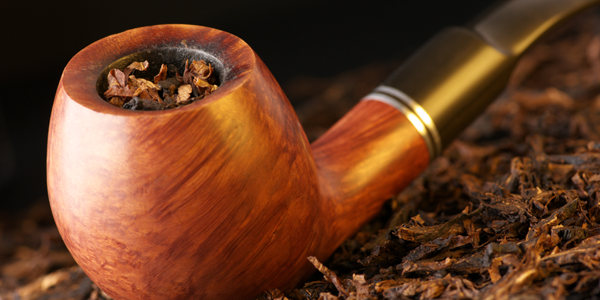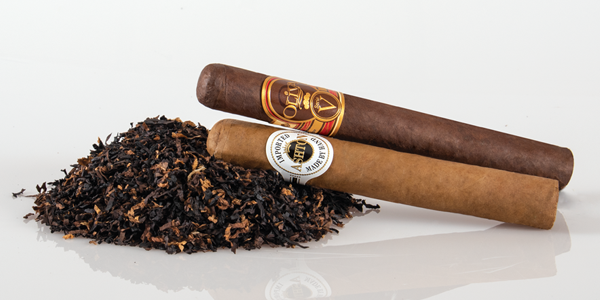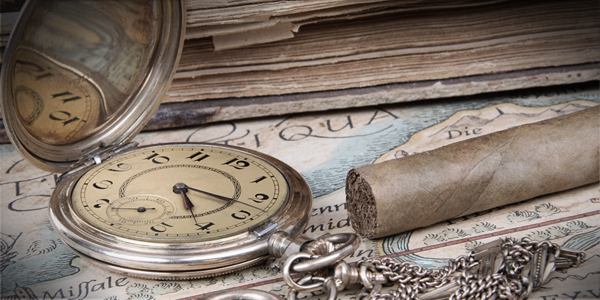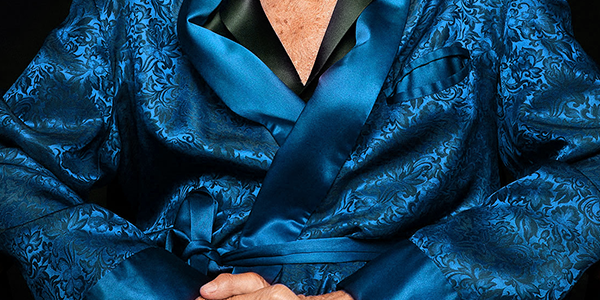History of Pipe Smoking & Pipe Tobacco
Back in the day – I’m talking the 1970s now – I smoked a pipe. I loved the workmanship of the pipes themselves and I probably bought close to two dozen over the next 10 years. I started out with an Irish-made Peterson Shannon Fishtail, a not inexpensive pipe given to me by a girlfriend whose family had money and whose father smoked pipes. The Shannon had a smooth finish and was what’s called a “tapered billiard,” I was told by the dad. I never really looked into it. I started out smoking a Middleton Cherry tobacco. It was a mellow blend of Burley and Virginia and tasted sweet, if not exactly like cherries. Ultimately, it was too sweet and I moved on to a Latakia blend. Latakia, named after a port city in Syria, is a smoke-cured tobacco and smells, well, like your BBQ smoker when it’s cooking. It can be any tobacco leaf that undergoes that curing process. Today, Latakia comes from Cyprus. What I really liked is that it smoked cool and slow. It’s also pretty pungent, depending on the blend, so it was not often appreciated by those around me.
When I started working and traveling a lot, carrying all the pipes and paraphernalia became cumbersome and I switched exclusively to cigars. That seems to have been the trend. Today, sales of pipes and pipe tobacco are miniscule compared with cigar sales. Some studies place pipe smoking down around 80 percent over the past decade. Even Dunhill, an iconic British pipe manufacturer famous for putting a white dot on its pipes, is getting out of the business, taking their cigar trade with them. But there’s still a certain elegance to enjoying a bowl of pipe tobacco and having no small amount of skill in keeping it lit. There’s a whole history to it.
The History of Pipe Smoking
Archaeological investigation has linked the first smoking pipes, made of copper, to Egypt around 2000 B.C. The pipes were found inside of tombs, next to mummies, though it’s not clear if the pipes were used for religious ceremonies or were recreational. Romans, Greeks, Celts, and Nordic tribes also smoked pipes, probably having picked it up from their travels east. Hippocrites – the Greek who gave birth to medicine and the Hippocratic Oath – prescribed “smoking herbs in a pipe” to treat female maladies. Another Greek, Herodotus, known as the “father of history,” noted Iranian tribes smoking “burning leaves” in 500 B.C.
Hashing It Out
These old-timers were not smoking a refined Latakia-Cavendish blend of tobacco. More than likely, they were smoking some herbs like hashish, commonly available in the Middle East and Southern Asia. In Africa, hemp was reportedly smoked in long-stemmed metal or wood-carved pipes.
New World Smokes
Tobacco was used by Native Americans (meaning folks who lived throughout the American continents) as far back as 1500 B.C., it’s thought, mostly for religious practices. The “peace pipe” was used as part of reconciling conflicts between rival tribes.
The use of tobacco in the new world was “discovered” by Christopher Columbus at the same time his crew found some locals smoking rolled-up tobacco leaves, a rudimentary cigar. Columbus also found the natives smoking pipes and took some samples of the tobacco back to Europe with him. Pipe smoking in Europe really took off in the 16th century when Jean Nicot, after whom “nicotine” is named, made tobacco popular in his native France after a stint as ambassador to Portugal where he was introduced, the story goes, to the medicinal values of the tobacco leaf. Nicot took tobacco in the form of leaves and snuff to France and, ultimately, pipe smoking became the first popular way of consuming tobacco.
The First Modern-ish Pipes
Pipes in Europe were first made of chalk and clay. They were relatively inexpensive and easy to produce. Iron pipes quickly followed in Norway. In 1720, Meerschaum pipes, made of a soft white clay-like substance, became popular due to the artistic carvings of the pipes with long stems. They drew well, but became intensely hot and the smoker would have to hold them by the stem. Touching the bowl of the pipe would burn fingers.
It took about 100 years for Meerschaum to fall off the top rung, yielding mostly to pipes made of briar wood, which holds to this day.
Today’s Pipes
Construction
Modern pipes are made of about ten parts, the most significant to us being the bowl and the stem, including the mouthpiece. The bore of the pipe is the channel that carries the smoke from the bowl to the lip, the end of the mouthpiece or bit. The “draught hole” is the opening at the bottom of the bowl where the smoke begins its journey. Packing the pipe with tobacco is an acquired skill that requires leaving a bit of air between the tobacco and the draught hole so that the smoldering tobacco’s smoke will pass easily when the pipe is puffed. A well-made – and well-packed – pipe is the equivalent to a well-constructed cigar. Pack a pipe with too much tobacco too tightly, and you’ll get a very plugged draw if you get any smoke at all.
Materials
Meerschaums still exist, but they are best hung on walls like those at Keen’s Steak House in New York City. The stuff of which most pipes are made nowadays, as mentioned, is briar. Yeah, corncob is still out there and some other woods can be used, but briar seems to be preferred. Metal and glass are not common for smoking pipe tobacco, but you do see them used for other substances. The stems and bits of pipes are usually made of easily molded materials like Ebonite, Lucite, Bakelite, Acrylic, and soft plastic. You don’t see too many stems made of reeds, bamboo, or wood these days. Amber was once used for pipe stems. That made the pipe expensive and the amber was hard to keep clean.
Variety of Shapes
Imagine how many different possibilities there are here. Essentially, there are straight pipes and curved-stem pipes. Some, like the Churchwarden, have very long stems. The Sitter is a curved pipe with a flat bowl so it can be rested on a flat surface. The MacArthur, after General Douglas MacArthur, is a large-bowled Corncob straight pipe. Here are some of my favorite tobacco pipe shapes.
Billiard: That was my first pipe and it’s pretty straightforward and the most common form of straight pipe, with the bowl and stem set at a 90-degree angle.
Bent Billiard: These have curved stems. They’re beautiful, but if you’re not careful while smoking it, saliva can collect and run into the stem.
Calabash: Think Sherlock Holmes. This is a curved pipe with a bowl made out of a gourd from the Calabash tree.
Put That In Your Pipe and Smoke It
Much more significant than the shape of the pipe, in my opinion, is what tobacco you put in it. There are basically two types: Aromatic and Non-Aromatic. The former is scented, the latter has no scent added after curing. You can go with a single tobacco type, or, as I did, blend different tobaccos to arrive at your favorite. I liked a Latakia-Cavendish blend. The latter added a little sweetness. Here are the more popular pipe tobaccos, used for different reasons.
Burley: Mostly used in cigarettes, this air-cured tobacco is light and is generally used in pipe tobacco as a base layer to enhance burning. It’s very high in nicotine and burns slowly. The flavor is very subtle.
Cavendish: Again, not a type of tobacco, but a method that enhances the sweetness of the leaves, often Burley in the curing process. Blenders add cherry, whisky, spiced rum, vanilla, and other flavors. It’s mild, delicate and fragrant.
Latakia: As mentioned, this too is a curing process that produces intensity and smokiness, often with a spicy note. I don’t recommend smoking this alone, but blending with something sweeter, like Cavendish.
Perique: A dark, strong, and distinct tobacco is produced in wooden casks in St. James Parish, Louisiana, where it was once pressed in tree trunks. A striking profile of musty, mushroom, and barnyard-like tasting notes calls for Perique to be used in moderation as a blending agent.
Oriental: Also called Turkish, these tobaccos are spicy and nutty and quite oily. They tend to have a sweet AND sour flavor. Latakia fits here, but these tobaccos vary widely in flavor and are quite fragrant. They’re found prominently in English blends.
Virginia: First, it’s not grown just in the U.S. It’s grown all around the world and is very sweet, too sweet to smoke alone, I think, but it works well as a base to which to add more savory flavors. It’s light and if it’s bad, it is quite biting on your tongue.
Making the Cut
Finally, though one could write an encyclopedia, you need to know a little about the way pipe tobacco is cut. There is a wide choice of cuts, but here are the most popular. You’ll have fun experimenting.
Shag: Shreds of fine and very fine long threads.
Bugler: Long, thin ribbons. Shorter and not as fine as the Shag.
Loose: Similar to the Bugler, but slightly thicker.
Broad: This is about twice as wide as the Loose cut and is often blended with other cuts.
Cross Cut: This is the Broad cut that is cut a second time to form small squares.







